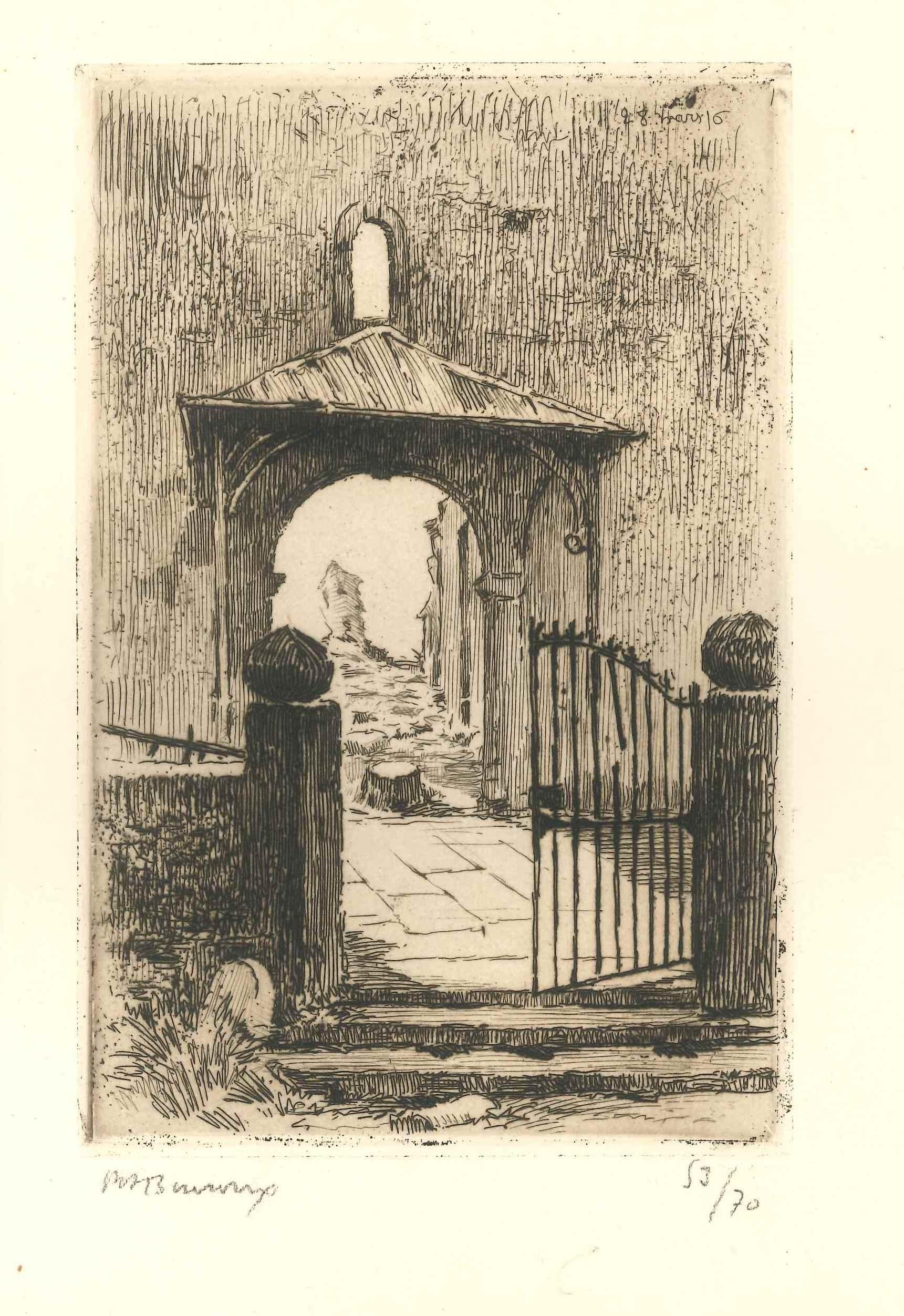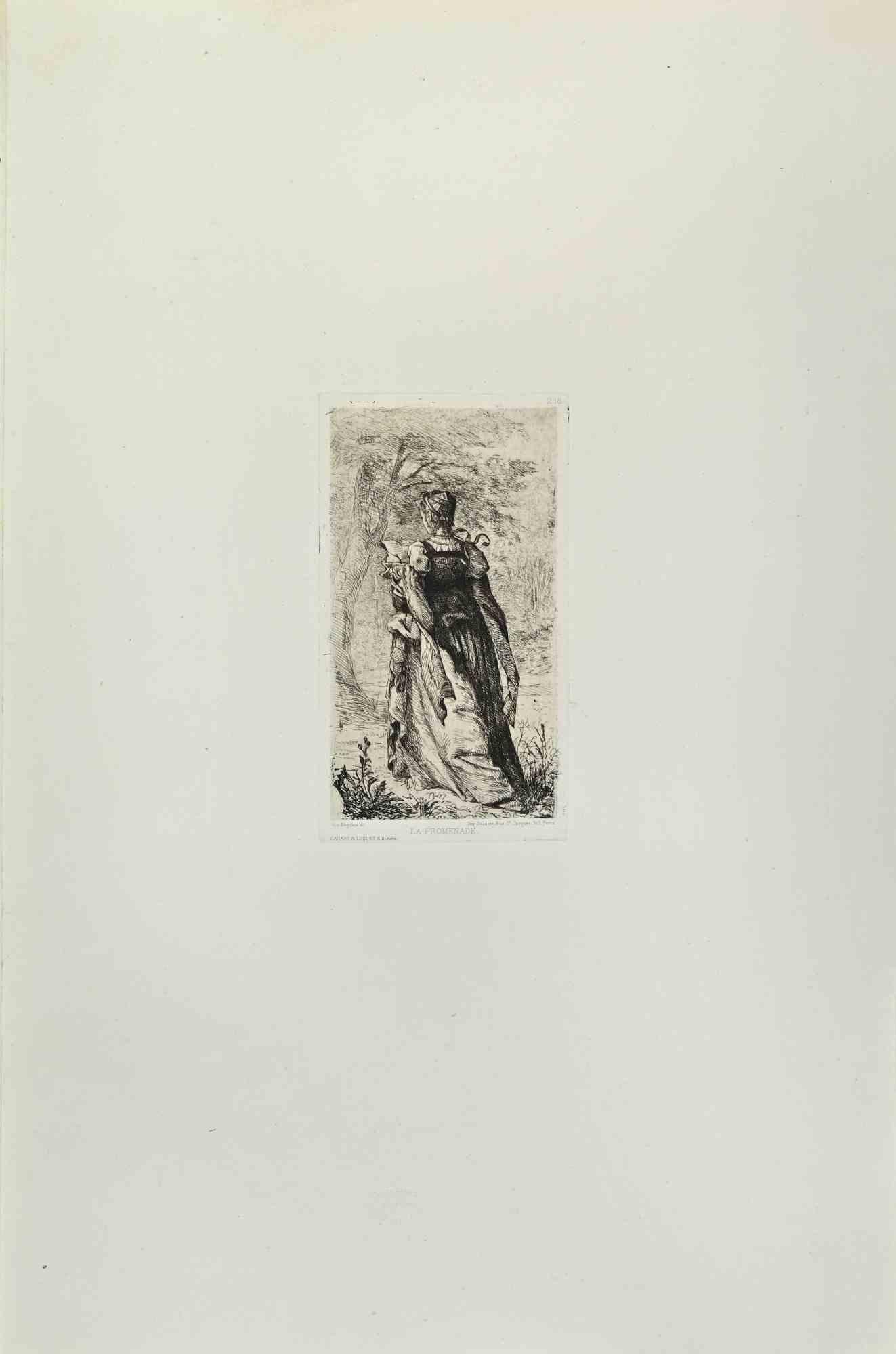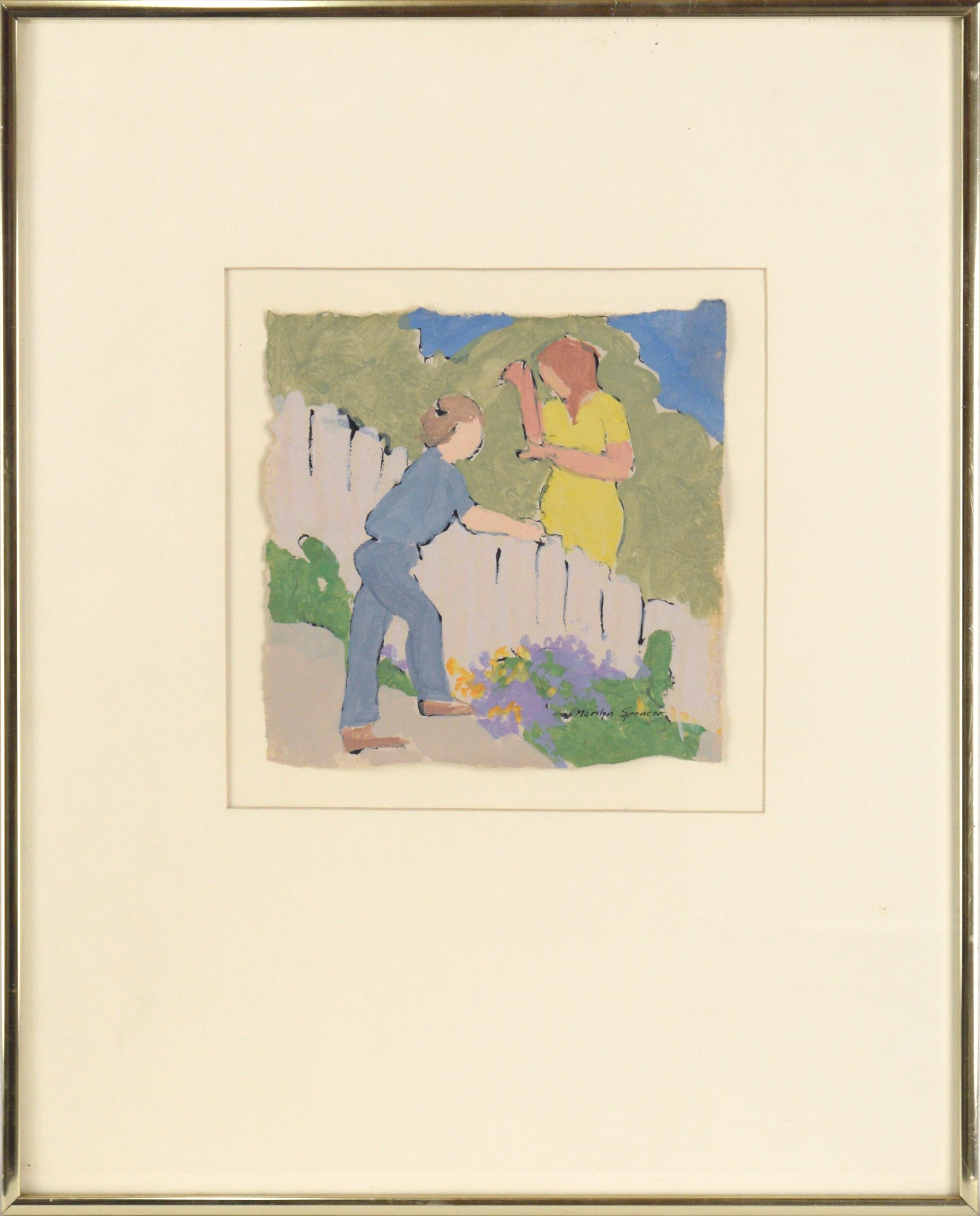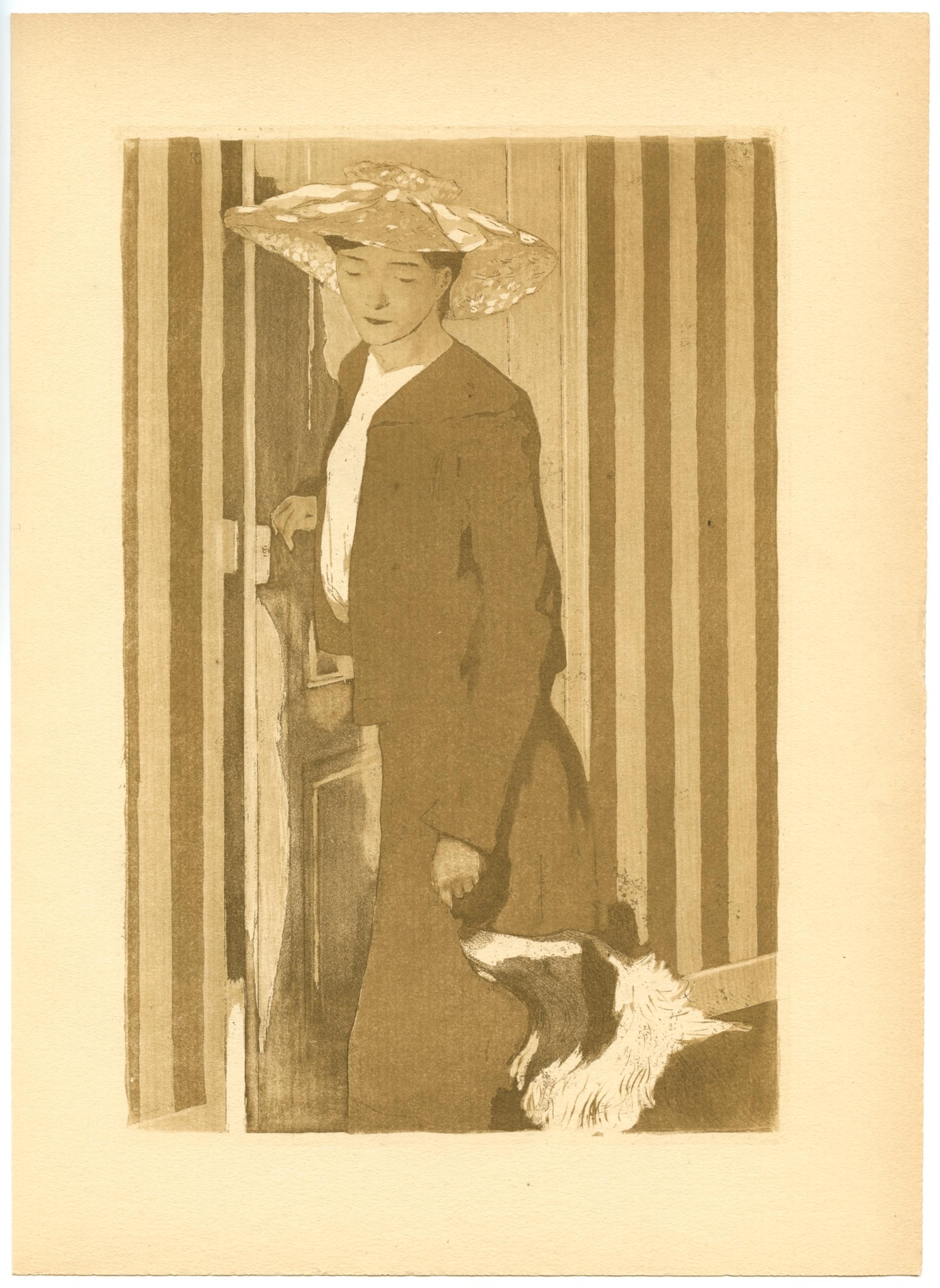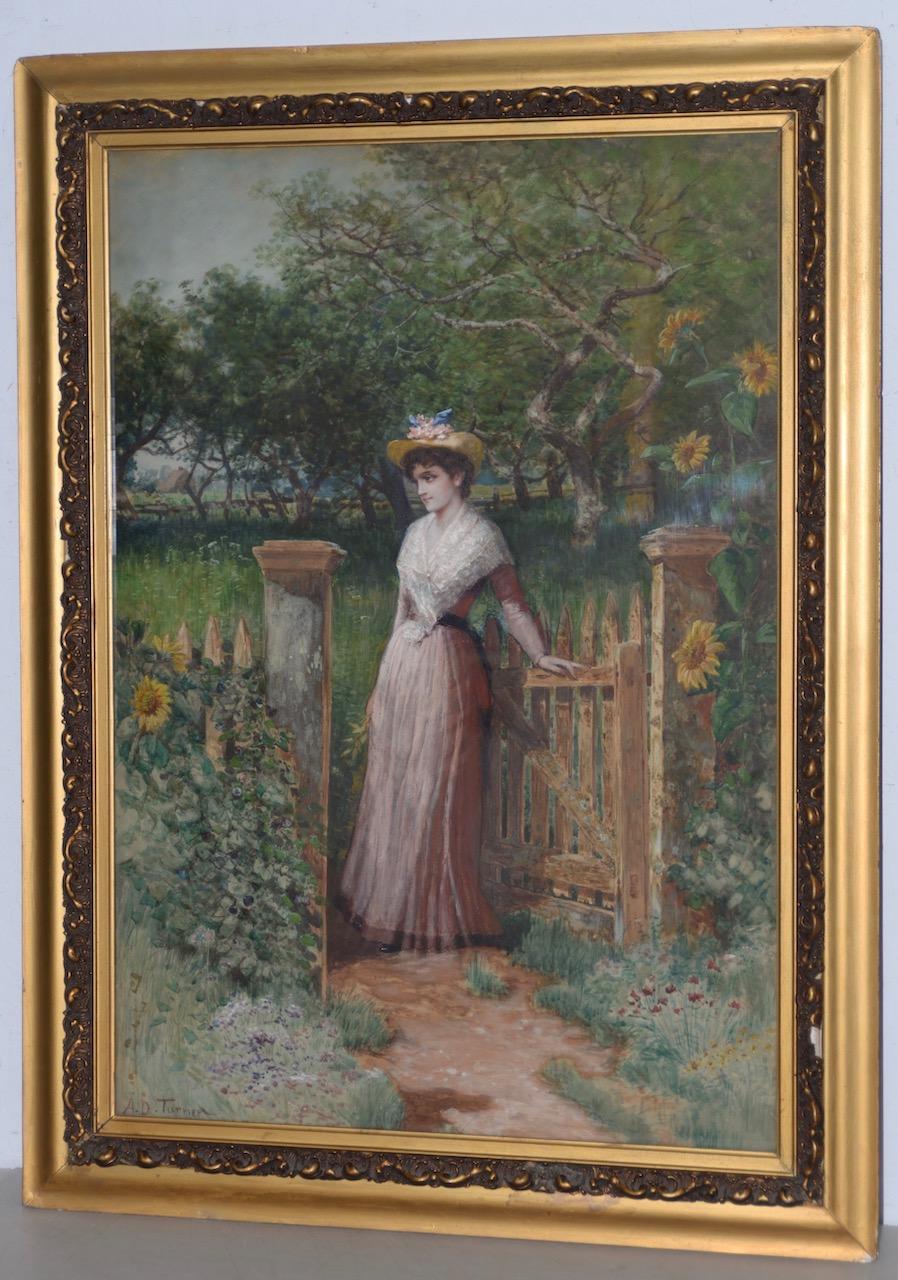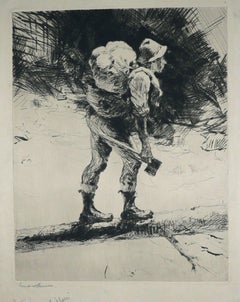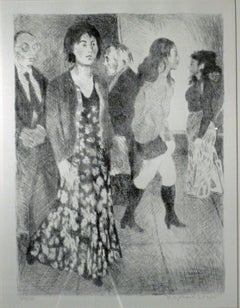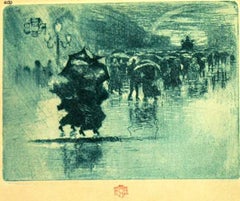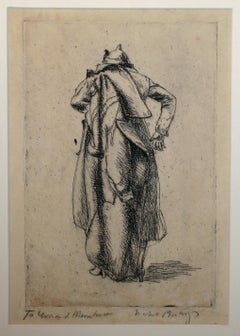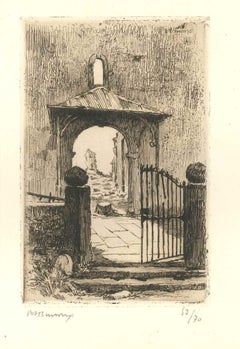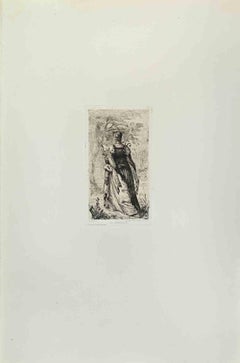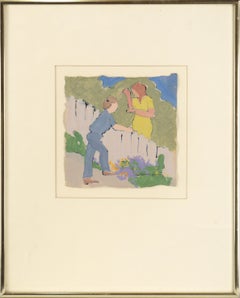Items Similar to PHOEBE PASSES MY GATE
Want more images or videos?
Request additional images or videos from the seller
1 of 5
Alfred HuttyPHOEBE PASSES MY GATE1931
1931
$3,500
£2,712.19
€3,077.78
CA$5,016.40
A$5,509
CHF 2,835.82
MX$65,916.79
NOK 36,106.27
SEK 33,836.95
DKK 22,986.11
About the Item
Hutty, Alfred. PHOEBE PASSES MY GATE.
Drypoint, c. 1931. Edition size c.75.
8 1/8 x 7 1/4 inches (plate), 10 1/4 x 8 3/4 inches (sheet).
Printed on laid paper. In excellent condition.
- Creator:Alfred Hutty (1877 - 1954)
- Creation Year:1931
- Dimensions:Height: 20 in (50.8 cm)Width: 16 in (40.64 cm)
- Medium:
- Movement & Style:
- Period:
- Condition:
- Gallery Location:Portland, ME
- Reference Number:Seller: 129321stDibs: LU36733599642
About the Seller
5.0
Recognized Seller
These prestigious sellers are industry leaders and represent the highest echelon for item quality and design.
Platinum Seller
Premium sellers with a 4.7+ rating and 24-hour response times
Established in 1966
1stDibs seller since 2016
358 sales on 1stDibs
Typical response time: 1 hour
Associations
International Fine Print Dealers Association
- ShippingRetrieving quote...Shipping from: Portland, ME
- Return Policy
More From This Seller
View AllTHE BRIDGE
By Frank Benson
Located in Portland, ME
Benson, Frank. THE BRIDGE. Paff 227. Drypoint on copper, 1923. A trial proof of the second state, printed on uncalendared Japanese Vellum, annotated "B-1," the first of two trial pro...
Category
20th Century American Realist Figurative Prints
Materials
Drypoint
STREET SCENE WITH MOSES SOYER
By Raphael Soyer
Located in Portland, ME
Soyer, Raphael. STREET SCENE WITH MOSES SOYER. Gettings 113 (not in
Cole). Lithograph, 1970. 19 1/4 x 14 1/4 inches; 488 x 362 mm. Edition
of 150, printed by Burr Miller. Signed in ...
Category
1970s Figurative Prints
Materials
Lithograph
LE PETIT ENTERREMENT (The Small Funeral)
By Félix Hilaire Buhot
Located in Portland, ME
Buhot, Felix. LE PETIT ENTERREMENT (The Small Funeral). B/G 154. Second state of two. Etching, roulette, aquatint and drypoint printed in blue on tan wove paper, 1880. 3 3/8 x 4 1/2 inches; 86 x 115 mm., (sheet 8 3/8 x 10 3/8 inches; 215 x 264 mm.). Signed with the red owl...
Category
1880s Figurative Prints
Materials
Drypoint, Etching
TAKING OFF HER COAT (REACHING FOR THE COAT SLEEVE)
By Isabel Bishop
Located in Portland, ME
Bishop, Isabel. TAKING OFF HER COAT (REACHING FOR THE COAT SLEEVE). Etching, 1943. Teller 32. An early proof, printed by Bishop before the 1981 edition of 50 printed by Stephen Sholinsky...
Category
1940s Figurative Prints
Materials
Etching
PASSER-BY
By Raphael Soyer
Located in Portland, ME
Soyer, Raphael. PASSER-BY. Etching, 1935 (Cole 40,).
9 5/16 x 6 7/8 inches; 237 x 175 mm.
Edition of 2 or 3, per Cole, "about three" per Gettings, "Raphael Soyer Sixty-Five Years o...
Category
1930s Figurative Prints
Materials
Etching
$12,500
UNTITLED (WOMAN LOOKING IN PURSE).
By Isabel Bishop
Located in Portland, ME
Bishop, Isabel. UNTITLED (WOMAN LOOKING IN PURSE). Ink on cardstock, not dated. Unsigned. 5 x 5 inches. A fast, likely unposed sketch of a passerby. In excellent condition.
Isabel Bishop, 1902-1988.
Isabel Bishop was born and raised in the Midwest. She came to New York in 1918 where she studied at the New York School of Applied Design for Women and the Art Students League, where her teachers included Kenneth Hayes Miller and Guy Pene du Bois. In 1934 she rented a studio in Union Square where she worked for the remainder of her career, often taking as her subjects the men and women who worked in the shops and offices on the square, or who walked or sat in Union Square Park.
She was a great draughtsman, and much of her graphic work is devoted to studies of the human figure in motion or at rest within the context of their activities in Union Square or similar settings. Bishop made etchings throughout her career, producing more than 80 prints between 1925 and 1982.
Prior to 1978 Bishop had editoned only a few of her prints; most of them were printed on an “as needed” basis only, by her, on her own press as gifts, or for sale. From 1978 on, Bishop collaborated with Sylvan Cole of Associated American Artists and the master printer Stephen Sholinsky...
Category
Mid-20th Century Figurative Drawings and Watercolors
Materials
Ink
You May Also Like
The Gate - Original Etching by Paul Adrien Bouroux - First Half of XX Century
By Paul-Adrien Bouroux
Located in Roma, IT
The Gate is an original artwork realized by the French artist Paul Adrien Bouroux in the first half of the XX Century.
Original Etching on paper. Passepartout included (cm 43 x 32)...
Category
Early 20th Century Modern Figurative Prints
Materials
Etching
The Gate, Chelsea
By Theodore Casimir Roussel
Located in New York, NY
Theodore Roussel (1847-1926), The Gate, Chelsea; etching and drypoint, 1889-1890, signed on the tab and inscribed imp [also signed in the plate lowere right]. Reference: Hausberg 33, fourth state (of 4), from the total printing of about 43 impressions. In excellent condition, trimmed by the artist all around on the plate mark except for the tab, 8 1/8 x 6 1/2 inches.
A fine impression, printed on a light cream wove paper with plate tone (wiped to brighten the gate and doorway area) and substantial burr in the drypoint work.
According to Hausberg, “The gate and house behind it still stand today at No. 4 Cheyne Walk...
Category
1880s Impressionist Landscape Prints
Materials
Drypoint, Etching
La Promenade - Etching by August Von Heyden - 1870s
Located in Roma, IT
La Promenade is an artwork realized by August Von Heyden in the 1870s.
Etching.
Good conditions.
Realized for the "Société des Aquafortistes. Born on the initiative of the publi...
Category
1870s Modern Figurative Prints
Materials
Etching
"The Back Fence" - Figurative Composition
Located in Soquel, CA
Lovely figurative composition of two neighbors talking over a fence by Marilyn Spencer (American, 1939-2017). A figure dressed in blue is leaning over a fence, towards a neighbor dressed in yellow. Presumably the two people are engaged in conversation, based on their body language. This piece has a loose, sketchy style that adds an innocent quality to the composition.
Signed in the lower right corner.
Tag on verso from Mullaly-Matisse Galleries
Presented in a gold-colored aluminum frame with an off-white mat.
Paper size: 7.5"H x 7.5"W (approx - paper is not square)
Marilyn Spencer (American, 1939-2017) was a lifelong resident of New Orleans and a popular regional artist. She worked mainly in acrylic (on canvas and paper) and lithograph, with most of her work depicting landscapes and scenes of women engaged in daily life. Spencer produced a lithograph for the New Orleans Saints...
Category
1980s American Impressionist Figurative Paintings
Materials
Paper, Acrylic
"Depart pour la promenade" original etching
By Raoul du Gardier
Located in Henderson, NV
Medium: original etching and aquatint in bistre. This impression on watermarked laid paper was printed in 1905 and published in Paris for the Revue de l'art ancien et moderne. Plate ...
Category
Early 1900s Realist Prints and Multiples
Materials
Etching
A.D. Turner Watercolor Portrait of a Young Woman at Gardens Gate c.1910
Located in San Francisco, CA
Early 20th C. Watercolor Portrait of an Elegant Young Woman at Gardens Gate c.1910
Absolutely beautiful watercolor by A.D. Turner. This elegant young woman stands in a country lands...
Category
Early 20th Century Impressionist Figurative Drawings and Watercolors
Materials
Watercolor
